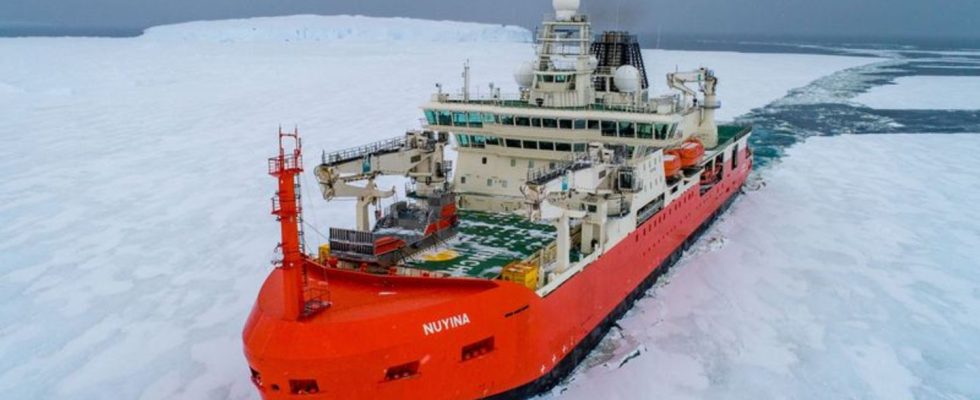emergencies
Icebreaker rescues sick person from Antarctic station
The Australian icebreaker “RSV Nuyina” has brought a sick person on board at the Casey research station in Antarctica after a long journey. photo
© Pete Harmsen/Australian Antarctic Division/dpa
Emergency in one of the most remote places in the world: An icebreaker is supposed to rescue a sick person from an Antarctic station. Now there is good news.
Success in rescue mission in one of the most remote places in the world: an Australian Icebreaker brought a sick person on board at the Casey research station in Antarctica after a long journey.
The “RSV Nuyina” is now on its way back to Hobart, thousands of kilometers away on the Australian island of Tasmania, local broadcaster ABC quoted a spokesman for the Australian Antarctic Division (AAD) government agency as saying on Monday.
On Sunday, the ship broke through the sea ice and reached a location 144 kilometers from Casey. “As soon as the ship got close, two helicopters took off from the helideck,” it said in a statement. “After a flight of almost an hour, the helicopters arrived in Casey and picked up the expedition member.”
thousands of kilometers away
The icebreaker left Hobart at the end of August and made its way to the Australian research station around 3500 kilometers away after a person stationed there fell ill. It was initially unclear whether the victim was a man or a woman. The person needs a specialist examination and needs care in Australia, the AAD had said.
Further details on the state of health were not initially known. All other participants of the expedition are doing well, it said. The sick person is now being cared for on the “RSV Nuyina” by polar doctors and the medical staff of the Royal Hobart Hospital. The Casey Research Station is located about 3,380 kilometers south of the metropolis of Perth. It is the closest permanent Antarctic station to Australia. While around 150 expedition members live there in summer, there are only around 20 in winter.

